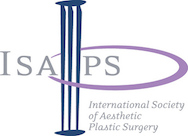We’re not ones to boast – but we can’t keep this to ourselves. We’ve been shortlisted for ‘Training Initiative of the Year’ in the Aesthetics Awards!
My, there’s a buzz in the air at Cosmetic Courses HQ. Even more so than normal. Finding out we’ve made the finals in our category has put a real spring in everyone’s step.

The perfect antidote to the onset of autumn and those back to school blues!
We’re genuinely thrilled to be shortlisted. And doubly delighted because it’s the second award we’ve been shortlisted for this year (we’ve also made the shortlist in the My Face My Body Awards.)
Everybody in our team works hard to provide the most comprehensive service they can to our delegates, both during their training and afterwards. So getting a tip of the hat in these awards is fantastic.
All finalists were officially announced in the September issue of Aesthetics Journal.
Judging and voting is now underway. The winner in our category will be decided by the judging panel, with no voting process – so you won’t be able to help us with this one. But you can wish us luck!
We’ve been told there were more entries this year than last, and the standard was the highest it’s ever been. So whatever happens from here, we’re really proud to even make it this far.
What happens next?
Voting and judging closes on 30th October. All the winners, as well as the Highly Commended and Commended finalists, will then be announced at the Aesthetics Awards 2015 ceremony on 5th December in London.
About the Aesthetics Awards
The aim of the Aesthetics Awards is to bring together the best in medical aesthetics and leaders in the profession to celebrate the achievements of the past year.
There are 24 categories in total, chosen to recognise a broad cross-section of the aesthetic industry for the contributions they have made. Awards are presented for clinical excellence, product innovation and practice achievement to those who have excelled in the field of aesthetic medicine. That includes clinics and individual practitioners, as well as manufacturers and suppliers.
The awards ceremony takes place on Saturday 5th December at the Park Plaza Hotel, Westminster Bridge. It’s expected there will be around 500 guests who – reading the itinerary – can look forward to a fantastic evening.
A drinks reception will be followed by a performance from a top comedian and sit-down dinner. After the main event – the announcement of the winners – we’ll let our hair down with music and dancing until late. Hopefully whilst celebrating, rather than commiserating, with our colleagues and friends!
Watch this space – we’ll be sure to let you know how we get on.


 The My Face My Body Awards were launched to better educate a wider audience about the aesthetic industry. They’ve quickly become one of the most high-profile awards in the industry, attended by experts and thought leaders from the fields of dentistry, cosmetic surgery, aesthetics and beauty as well as journalists and celebrities.
The My Face My Body Awards were launched to better educate a wider audience about the aesthetic industry. They’ve quickly become one of the most high-profile awards in the industry, attended by experts and thought leaders from the fields of dentistry, cosmetic surgery, aesthetics and beauty as well as journalists and celebrities.


 Global plastic surgery body ISAPS (International Society of Aesthetic Plastic Surgery) have released some interesting stats on the number of cosmetic procedures performed in 2014.
Global plastic surgery body ISAPS (International Society of Aesthetic Plastic Surgery) have released some interesting stats on the number of cosmetic procedures performed in 2014.
 The aesthetic industry doesn’t stand still for long. With increasing regularity, new treatments come along and grab the public imagination.
The aesthetic industry doesn’t stand still for long. With increasing regularity, new treatments come along and grab the public imagination. 






